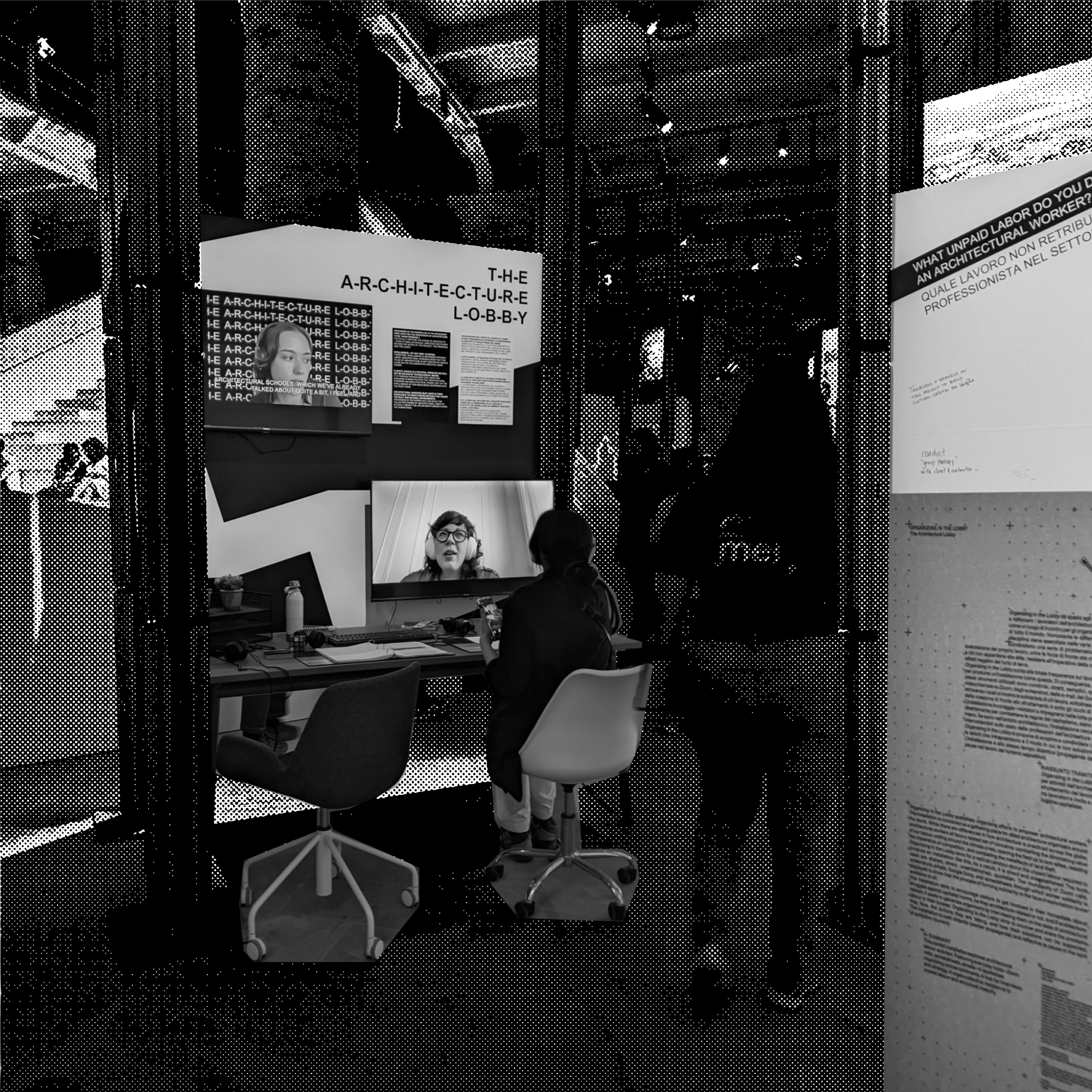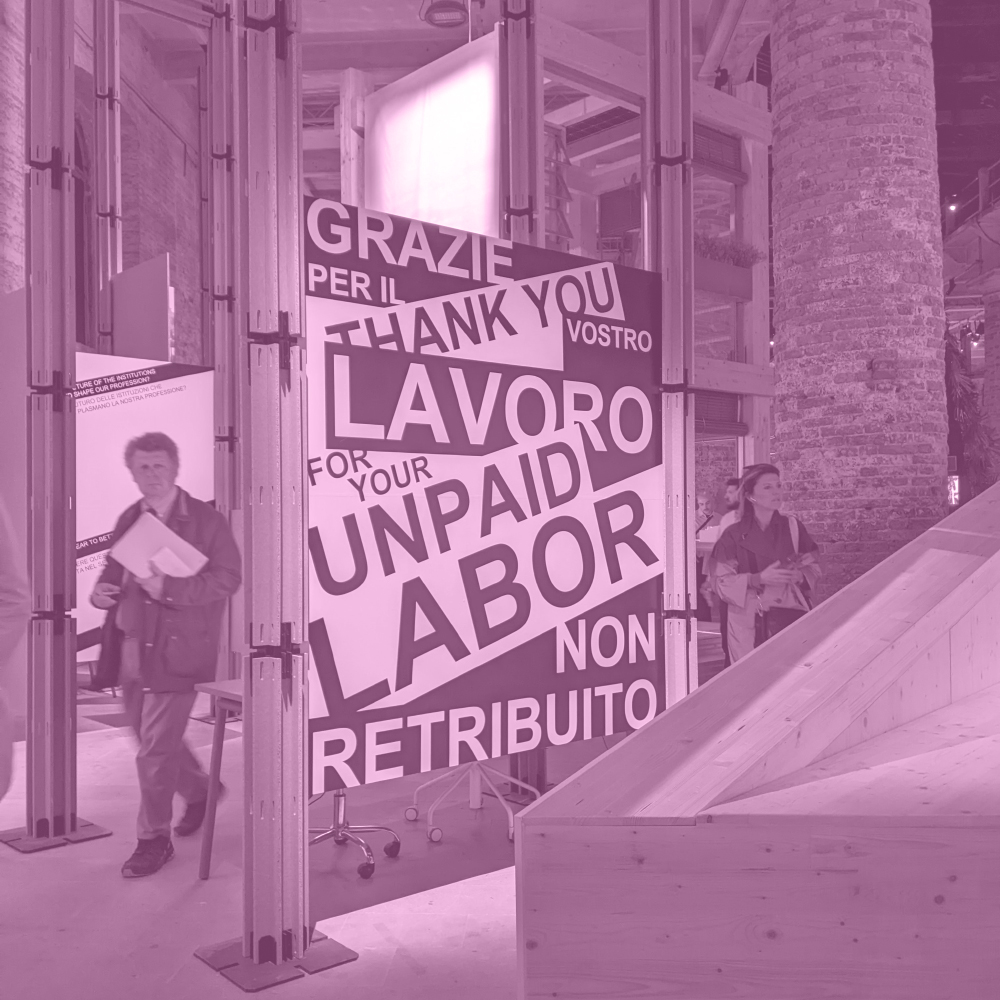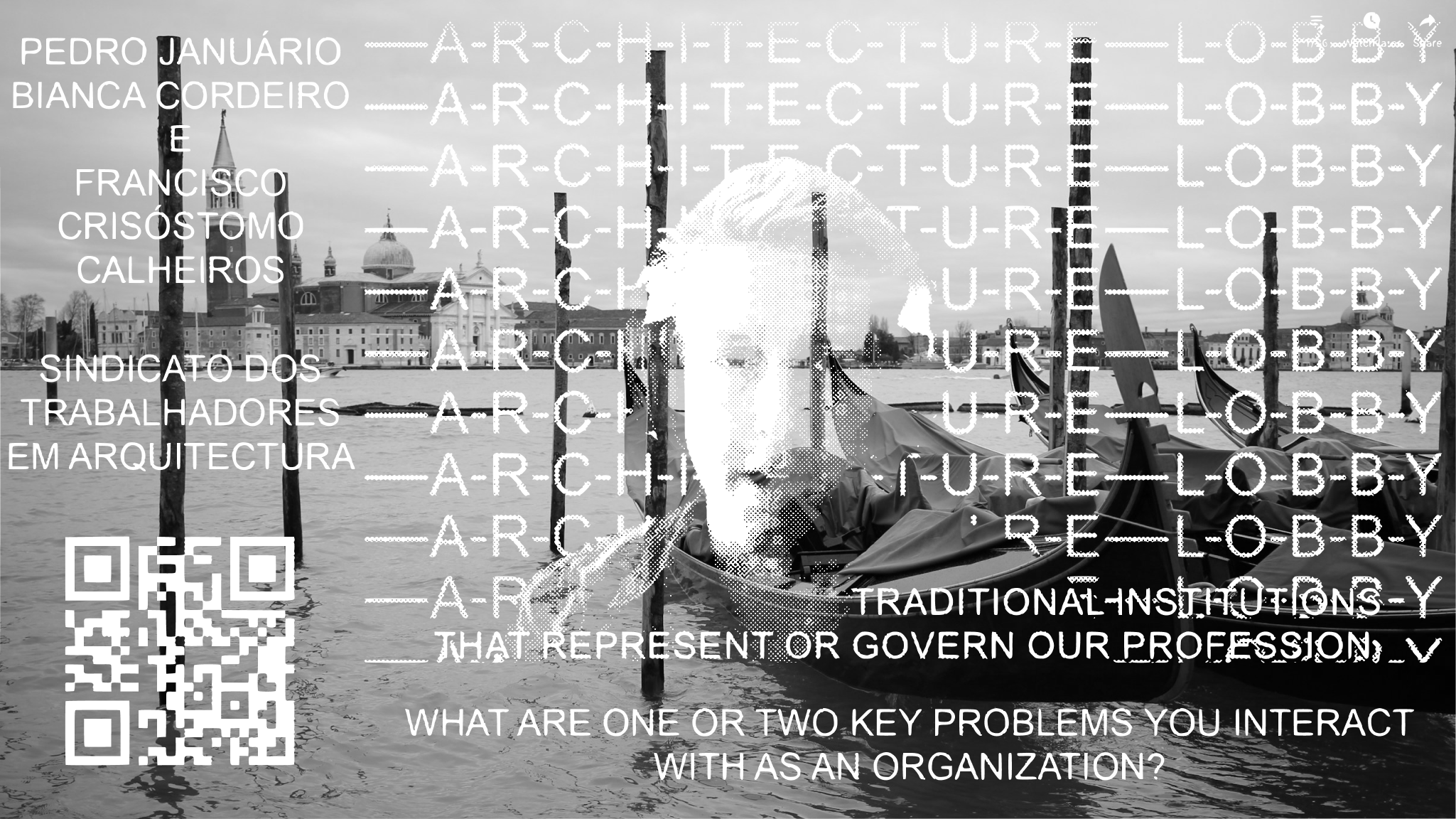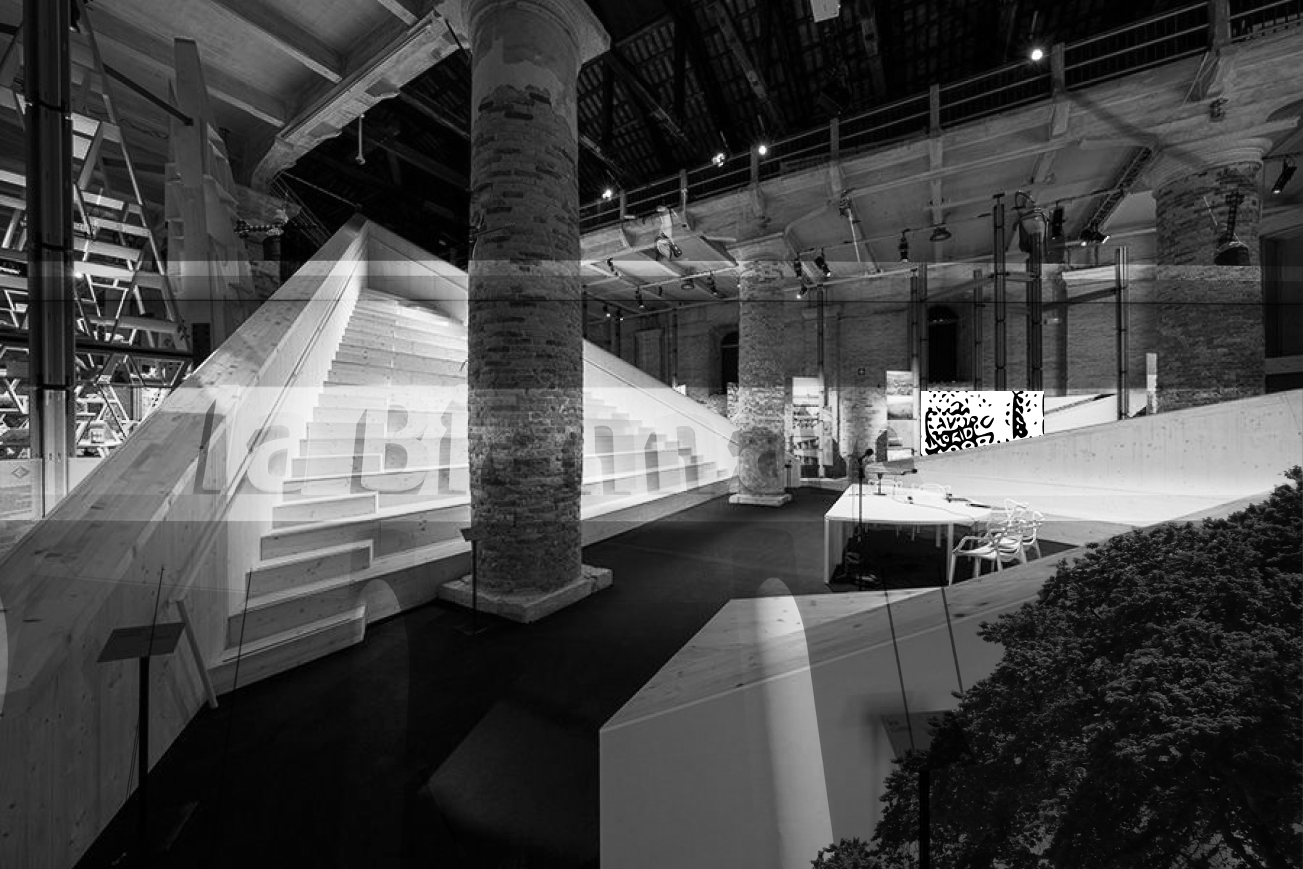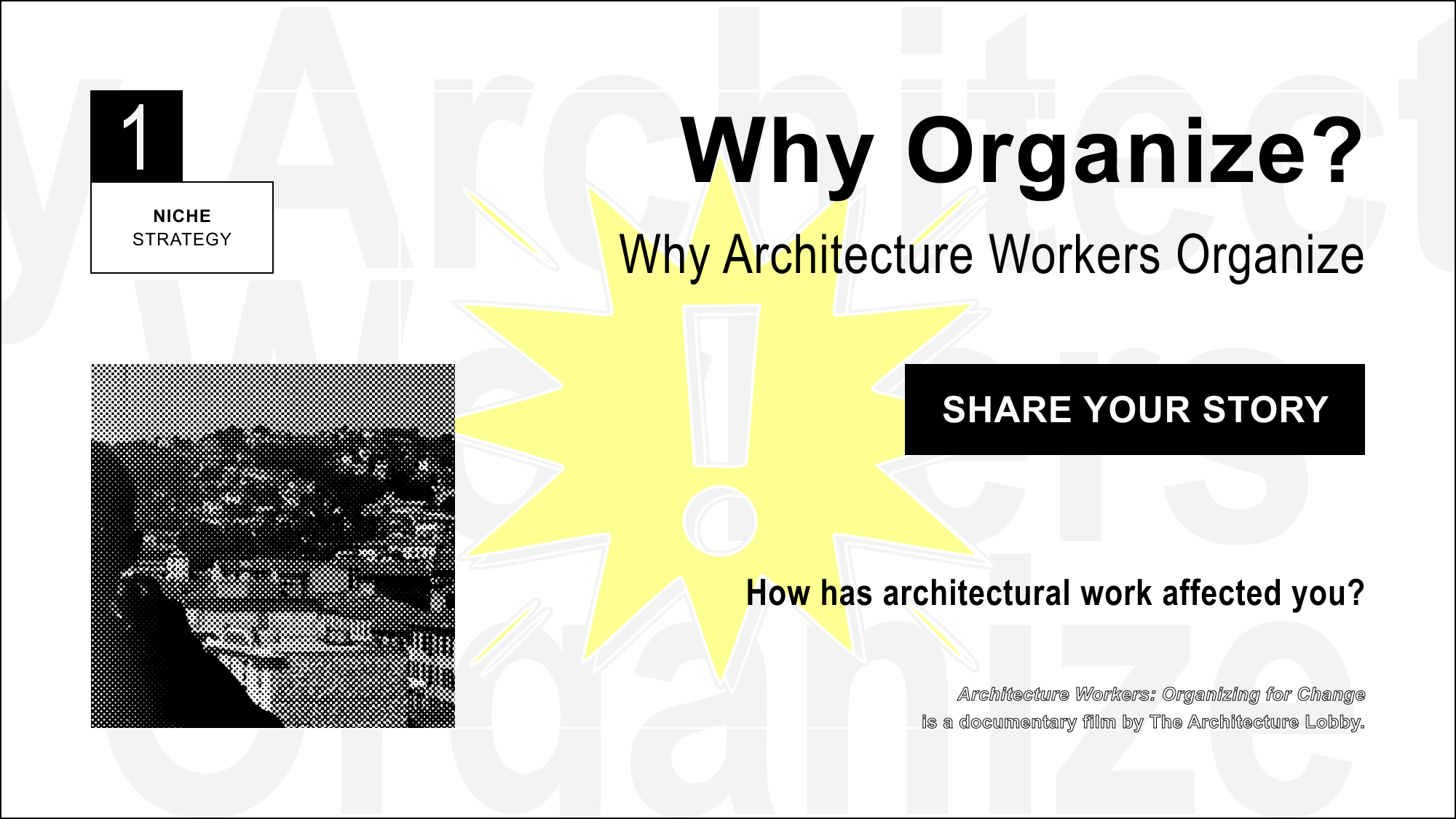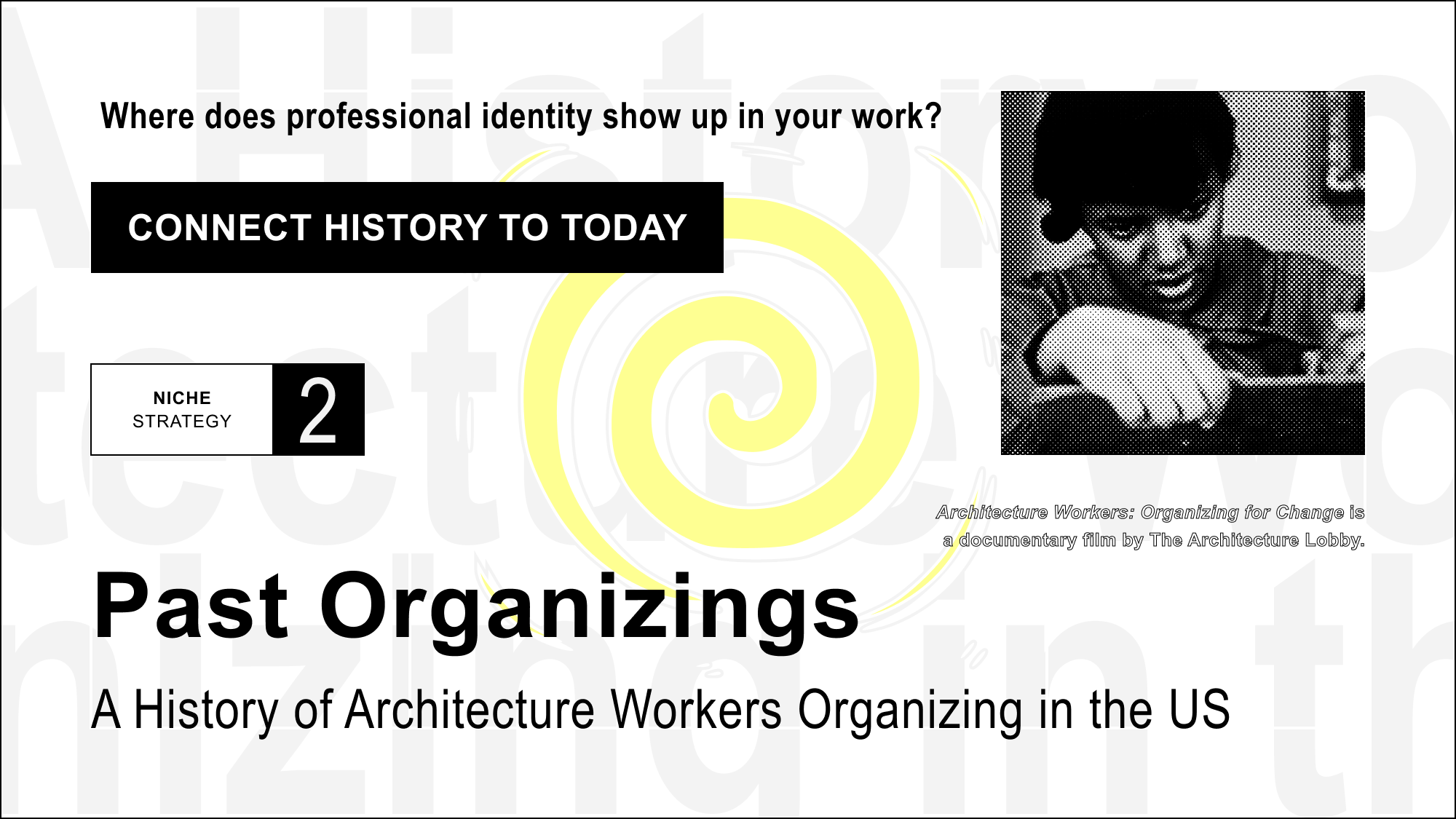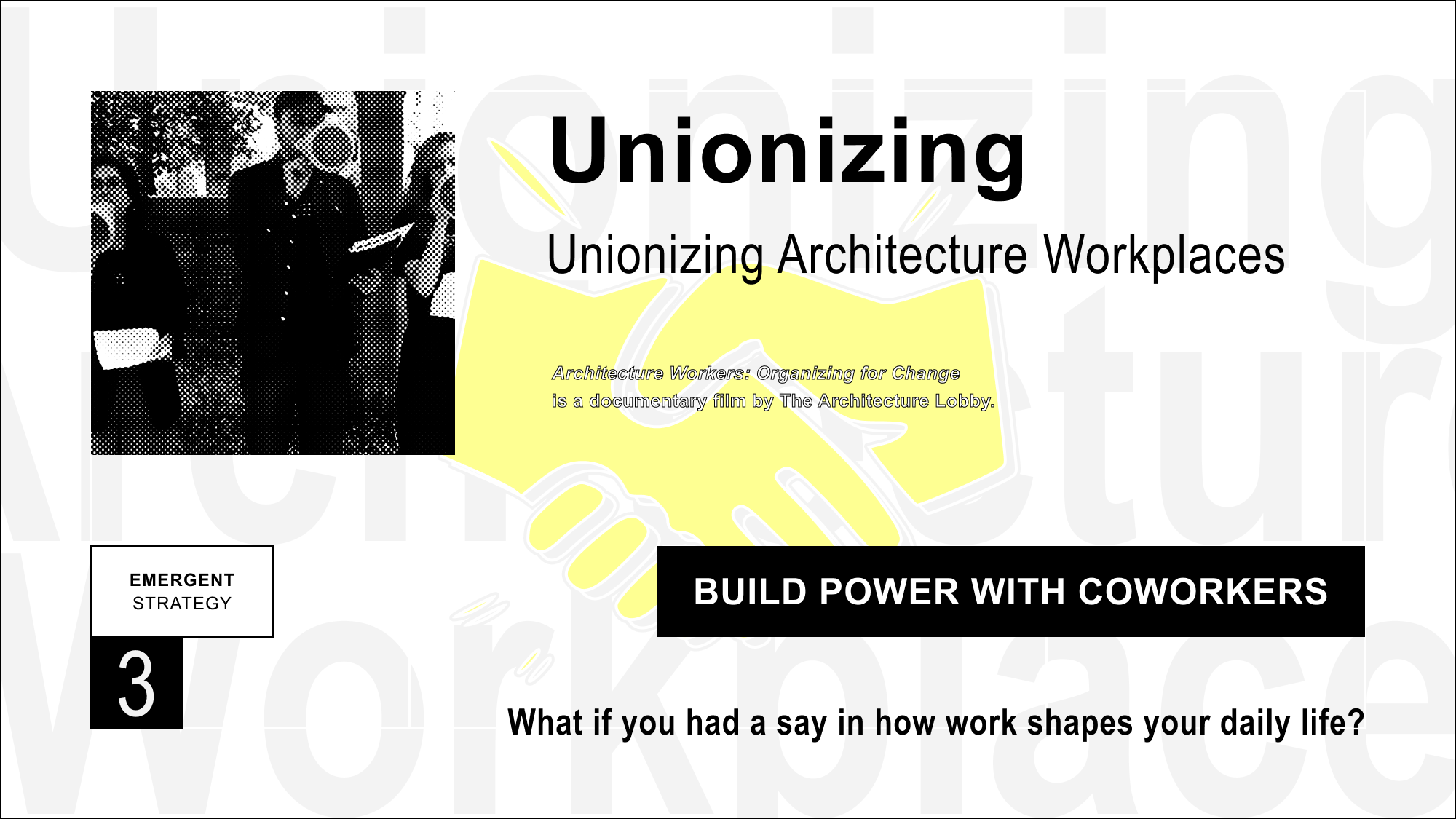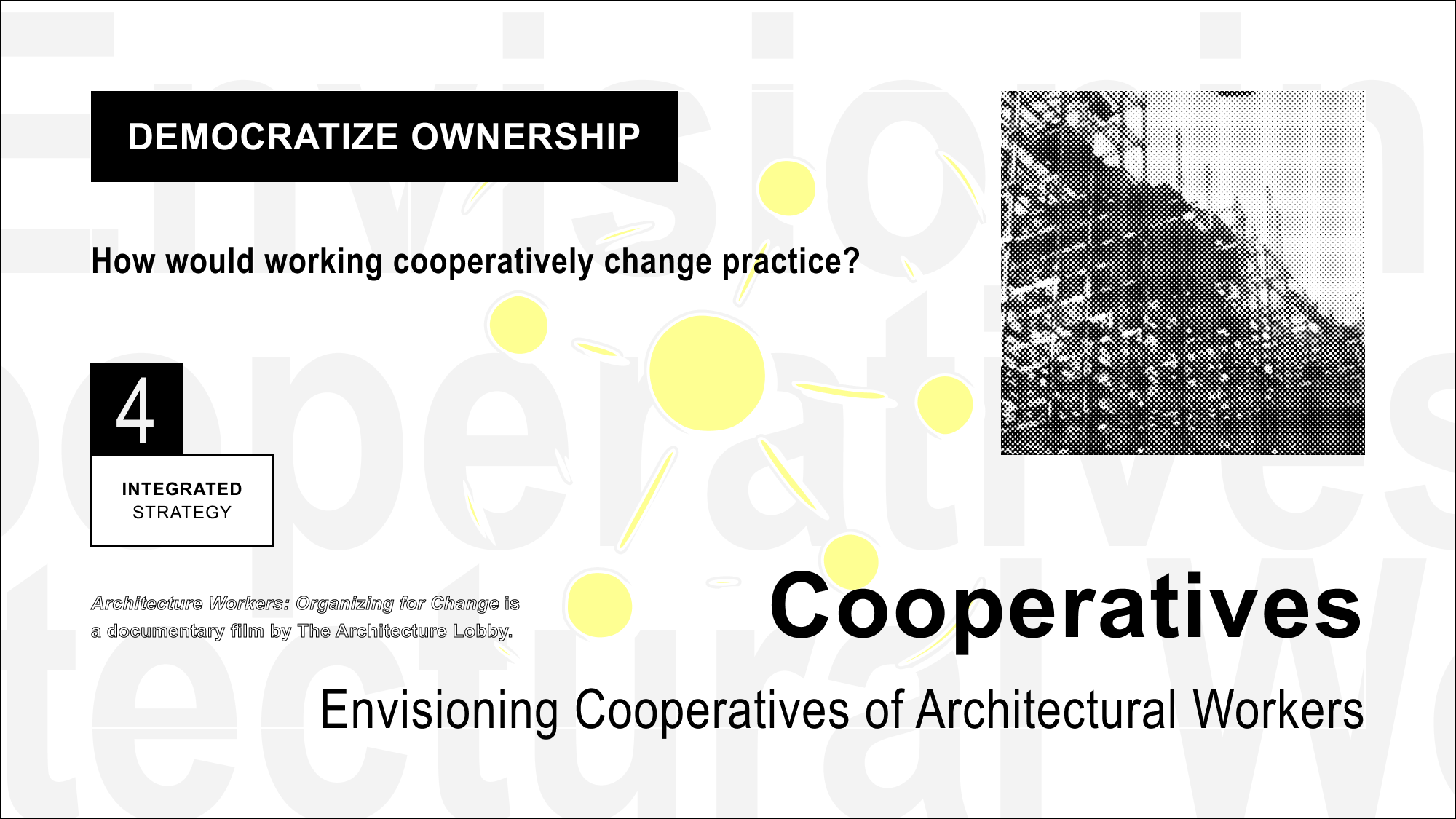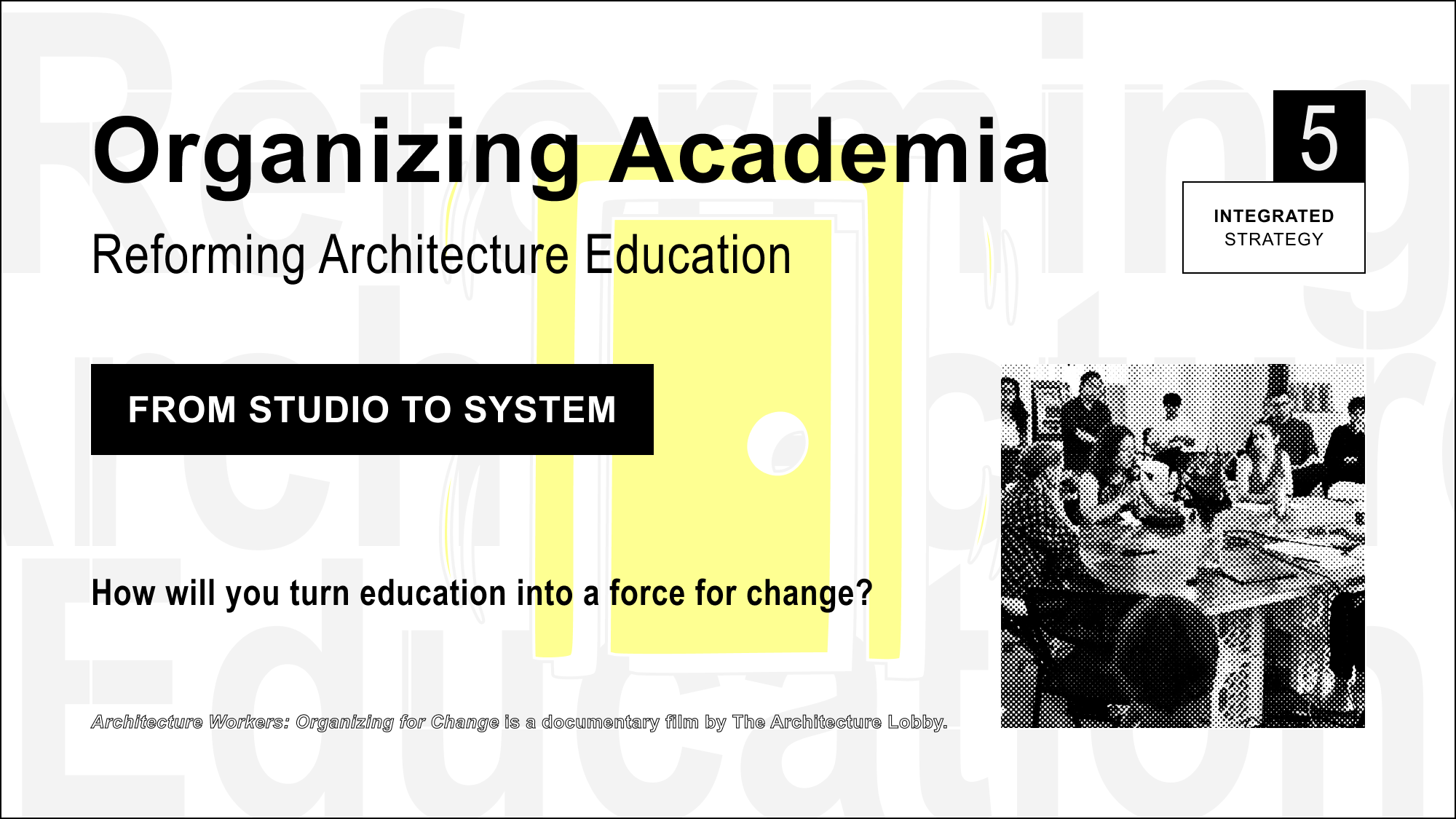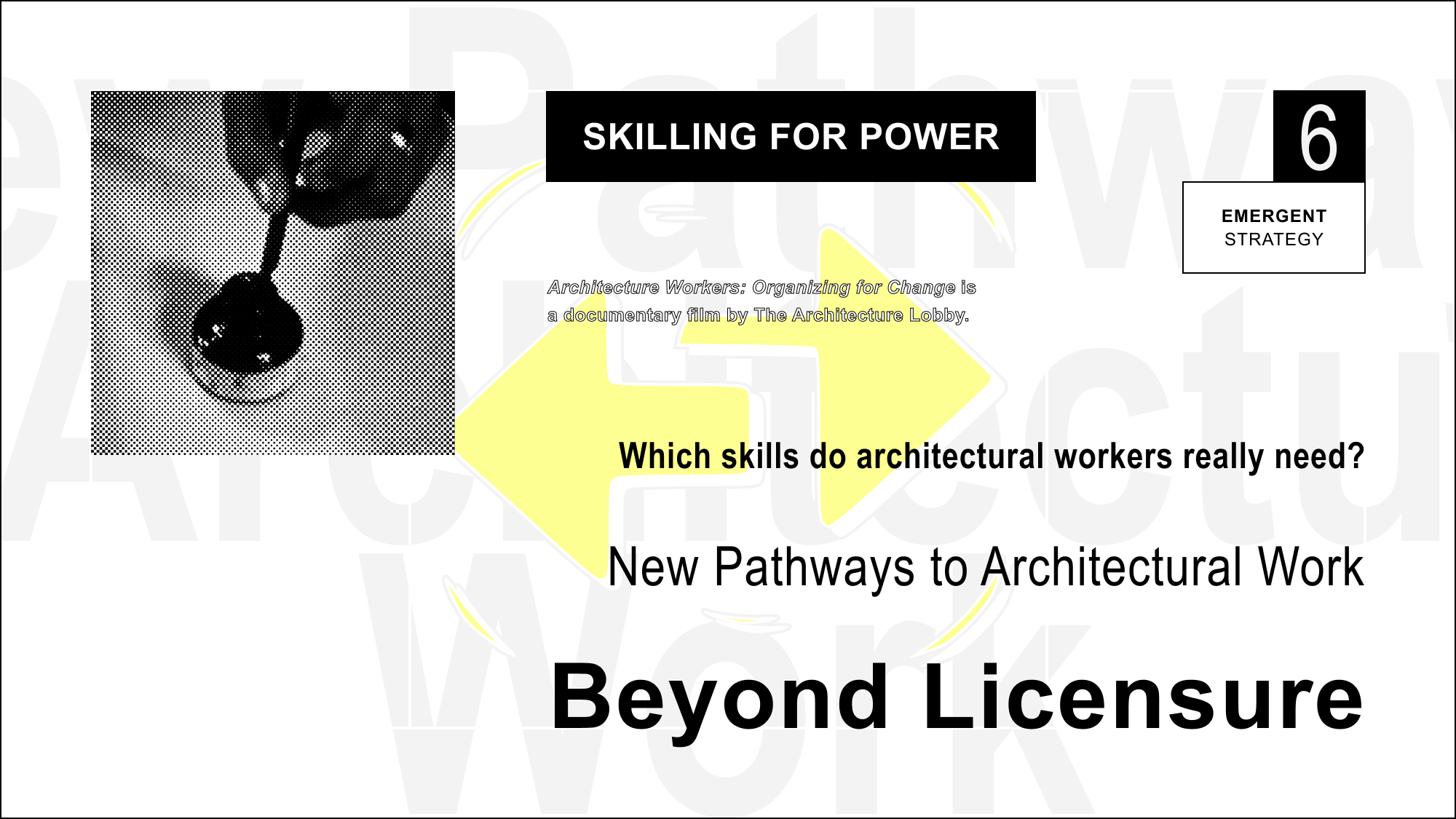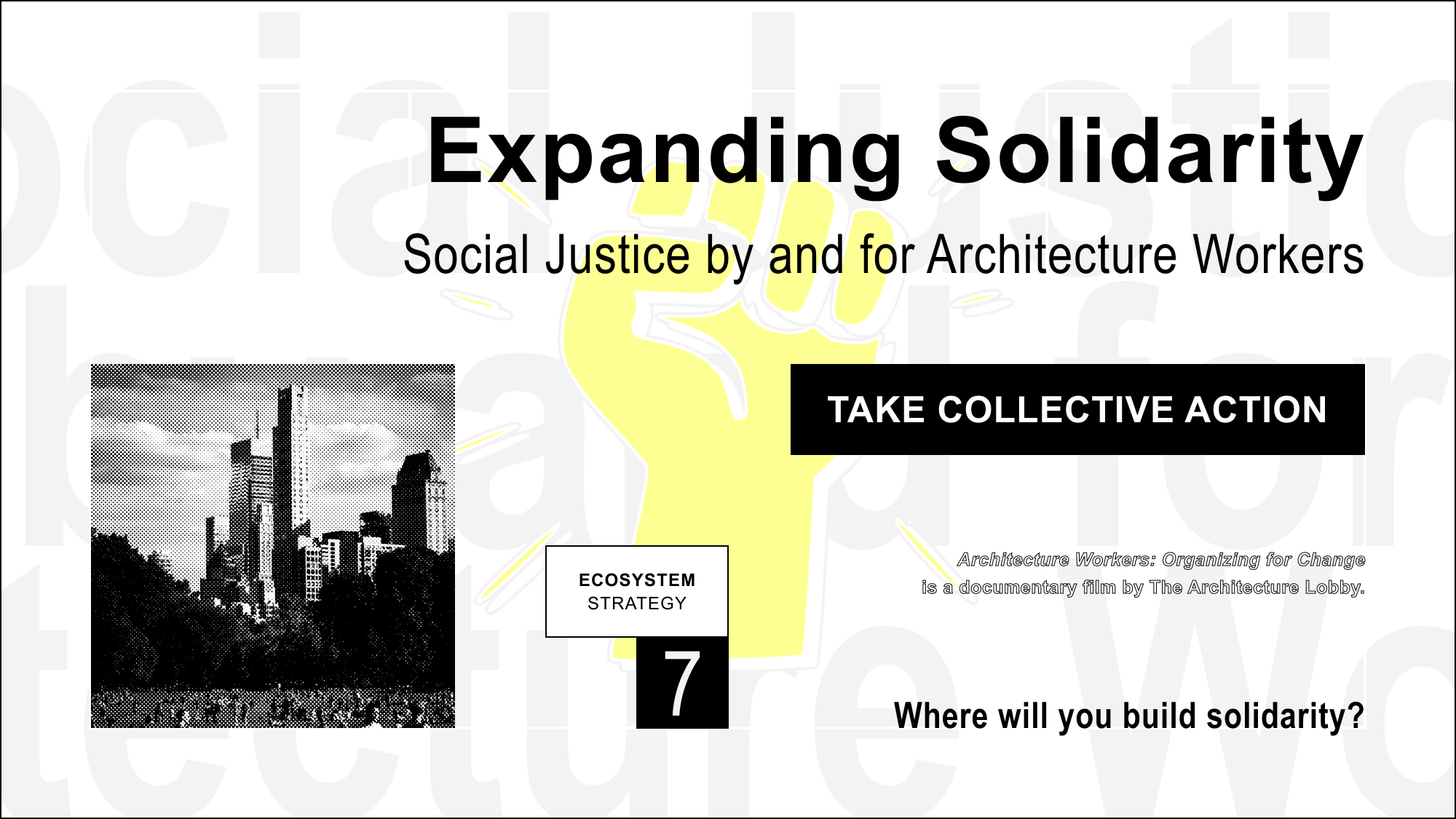Across movements for workplaces, schools, and policies, architecture workers expand solidarity — building an ecosystem of change.
Episode 1
Why Architecture Workers Organize
Share your story: How has architectural work affected you?
Episode 2
A History of Architecture Workers Organizing in the US
Connect history to today: Where does professional identity show up in your work?
Episode 3
Unionizing Architecture Workplaces
Build power with coworkers: What if you had a say in how work shapes your daily life?
Episode 4
Envisioning Cooperatives of Architectural Workers
Democratize ownership: How would working cooperatively change practice?
Episode 5
Reforming Architecture Education
From studio to system: How will you turn education into a force for change?
Episode 6
New Pathways to Architectural Work
Skilling for power: Which skills do architectural workers really need?
Episode 7
Social Justice by and for Architecture Workers
Take collective action: Where will you build solidarity?
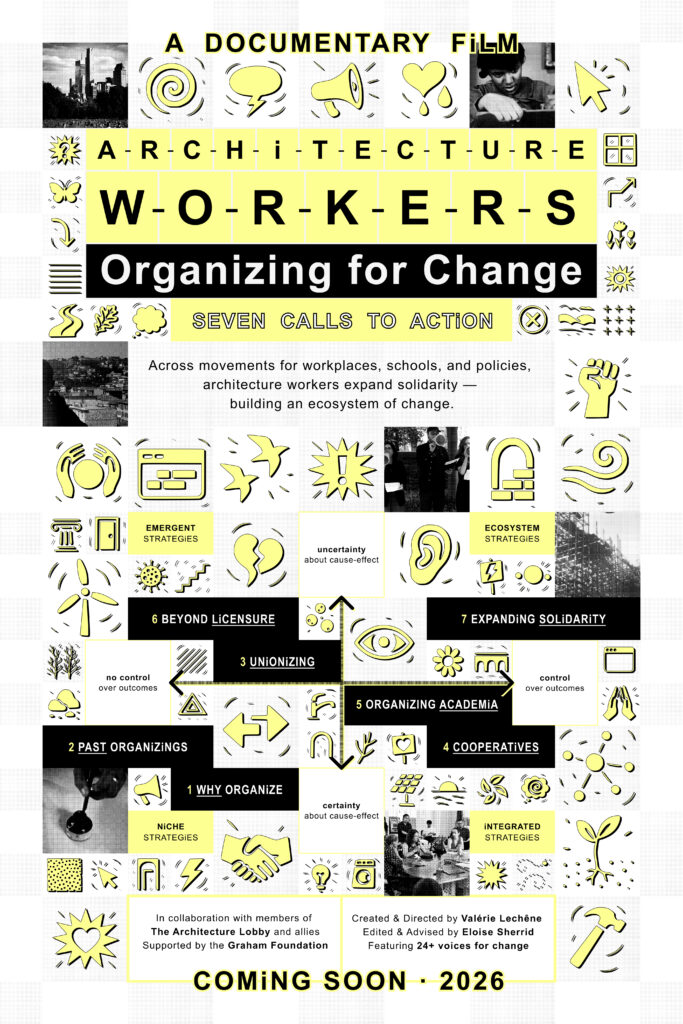
In collaboration with members of The Architecture Lobby and allies.
Supported by the Graham Foundation.
Why Architecture Workers Organize: Building an Ecosystem of Change
Across the profession, architectural workers are embracing their collective power to reshape the politics of labor — and space.
Every building reflects choices about who matters, what gets funded, and how power operates through space. Now the workers who design our cities, schools, and homes are claiming agency over those choices – building workplaces that respect their expertise, firms that prioritize community needs, and a profession that values both creative vision and worker dignity.
Architecture Workers: Organizing for Change introduces members of The Architecture Lobby – a grassroots organization of architectural workers – as they build power across seven interconnected strategies. From individual stories of workplace exploitation to collective visions of cooperative ownership to a broad vision of a world born of solidarity and collective liberation, the film reveals how organizing is transforming not just individual firms, but the entire profession.
Seven Calls to Action, One Movement
The documentary’s seven episodes trace a powerful progression from individual consciousness to ecosystem-level change, drawing on organizational theorist Alnoor Ebrahim’s framework for social impact outlined in his 2019 book Measuring Social Change. While Ebrahim defines “ecosystem strategy” as one organization’s approach to influencing multiple actors and institutions for systemic change, The Architecture Lobby exemplifies this approach by coordinating organizing strategies across workplaces, schools, and communities. Ebrahim’s framework maps four strategy types based on two key factors: how certain an organization can be about cause-and-effect relationships, and how much control it has over outcomes. The Lobby employs all four approaches—from niche strategies like focused union campaigns to integrated approaches combining education and workplace organizing, emergent strategies that respond to opportunities as they arise, and ultimately an ecosystem strategy that influences the entire profession. Like the diagram on this poster, each strategy builds on the others—creating an ecosystem of transformation that extends far beyond any single workplace or institution.
Why Organize? starts with the fundamental question: how has the current system of architectural work personally affected you? When workers share their stories—the 26-hour shifts, the unpaid competitions, the discrimination—they discover their struggles aren’t isolated incidents but symptoms of systemic conditions. Connection builds solidarity, and solidarity powers justice. How has architectural work affected you?
Past Organizings reveals that architectural workers have fought back before—and how the ideology of professional identity has been used to divide them from other workers. From the profession’s origins in the 18th century to 1930s architects advocating for public housing to McCarthy-era blacklists that dismantled their organizations, history shows both organizing power and deliberate barriers. Where does professional identity show up in your work, and how can we change that?
Unionizing gets practical. Through collective bargaining, architectural workers can win shorter work weeks, minimum salaries, and just-cause termination protections—proving that organizing creates real workplace improvements. What if you had a say in how work shapes your daily life?
Cooperatives imagine democratic ownership in action. When workers own firms collectively, they can set wages transparently, share decision-making equally, and prioritize community projects over profit maximization. Cooperative structures prove that alternative ownership models create more equitable workplaces while maintaining professional excellence. How would working cooperatively change your practice?
Organizing Academia tackles the root of our field’s problems. Students and faculty are mapping power structures in architecture schools, challenging curricula that ignore labor rights, and connecting education to broader social justice movements. How will you turn education into action?
Beyond Licensure questions the gatekeeping system itself. What if education weren’t tied to state licensing? What if apprenticeships ran through unions instead of corporate firms? Which skills do architectural workers really need to build power—in practice and beyond?
Expanding Solidarity connects these strategies together. From climate justice to housing rights to accessibility, architectural workers are building coalitions across movements for social change. The biggest transformations happen when struggles connect across industries, communities, and generations. Where will you build solidarity?
An Ecosystem of Strategies
What makes this organizing strategy so powerful is how the approaches reinforce each other. Unionizing and cooperative formation offer different paths to worker power—collective bargaining within existing firms versus democratic ownership of new ones. Academic organizing produces the next generation of worker-organizers. Historical consciousness prevents the kind of cultural amnesia that has weakened past movements. Community solidarity provides the broader context that makes workplace victories meaningful.
This isn’t just about improving conditions in architecture firms—though that’s urgent and necessary. It’s about recognizing that the people who shape our built environment have the power to reshape how that environment serves collective wealth over extractive individual accumulation. When architecture workers organize, they’re not just fighting for themselves. They’re fighting for cities that prioritize affordable and dignified housing over speculation, schools that serve communities rather than developers, and a climate future built on regenerative and resilient prosperity.
Join the Movement
Every episode of the documentary ends with a call to action because this isn’t a film you watch passively. It’s an invitation to organize. Whether you’re facing supervisor abuse, wondering how to start a cooperative, or ready to challenge the curriculum at your school or fostering connections between your work and the broader struggle for liberation, the strategies are here. The networks are growing. The movement is happening.
The Architecture Lobby exists because collective action creates change. When workers share their stories of exploitation, they discover shared struggles. When organizers study the history of architectural labor movements, they learn from past victories and defeats. When Bernheimer workers won their union contract, they showed every other architecture firm what’s possible. When WiP operates as a cooperative, they prove alternative ownership models work. When students organize discussion forums, they plant seeds for the next generation of worker-organizers. When alternative education models like the Free Architecture School emerge, they show that learning can happen outside traditional institutions. When architectural workers join climate justice and housing rights campaigns, they connect workplace organizing to broader social movements. Together, we create the world we need.
Each victory creates ripple effects. Each new organizer multiplies the movement’s capacity. Each connection across sectors strengthens the ecosystem.
The built environment reflects our values. If we want buildings to serve the flourishing of a community, workplaces that honor worker expertise, and cities designed for collective good, then the workers who design them need power.
That power comes through organizing. And organizing starts with conversation.
Architecture Workers: Organizing for Change premieres in 2026. To create maximum impact, we’re organizing screenings in communities before making the film widely available. Want to host a screening at your workplace, school, or community space? Reach out to us at info@architecturelobby.org to get started. After the premiere, individual episodes will become available with discussion guides to support ongoing organizing conversations. Because the most important happens after the credits roll—when you turn strategies into campaigns in your workplace, school, or community.
The future is being built right now. Join the workers shaping it. When we organize together, we forge solidarity. And that’s how we create a just and abundant future.

